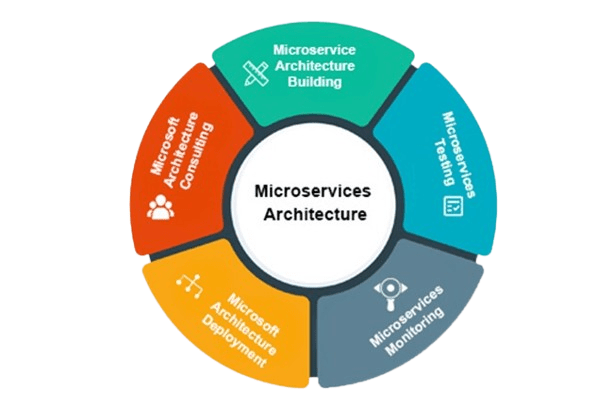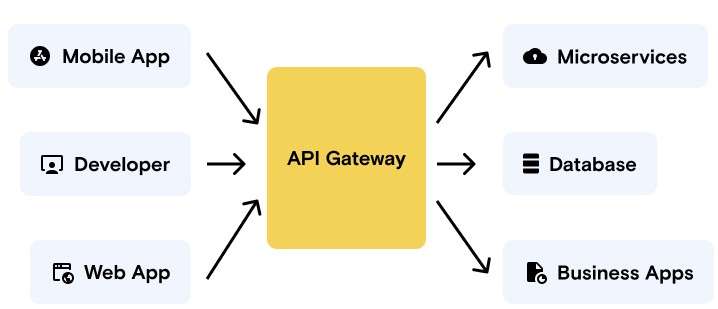
- Introduction to Microservices
- What is Microservices Architecture
- Setting Up Node.js Microservices
- Service Communication
- API Gateway
- Database Management
- Authentication in Microservices
- Load Balancing
Introduction to Microservices
Microservices architecture is a modern approach to software development where an application is structured as a collection of loosely coupled, independently deployable services. This model allows for greater scalability, flexibility, and ease of maintenance compared to monolithic architectures. Each microservice is designed to perform a specific business function and communicate with others through APIs. To create microservices in Node.js, developers leverage the lightweight and asynchronous nature of Node.js, making it ideal for building fast and scalable services. When you build microservices with Node.js, you can efficiently handle real-time data, integrate with various systems, and deploy services independently. Additionally, managing data persistence across services often involves using robust tools like SQL Server Management Studio (SSMS), which provides a powerful interface for managing SQL Server databases. For developers looking to enhance their skills, Web Developer Certification Courses offer comprehensive training in technologies that complement tools like SSMS, empowering professionals to efficiently build and manage databases while designing seamless web applications. SQL Server Management Studio allows you to design, query, and monitor databases that your microservices rely on, ensuring data integrity and performance. This combination of Node.js for service logic and SQL Server Management Studio for data management creates a solid foundation for scalable and maintainable enterprise applications. Whether you’re modernizing legacy systems or starting new projects, adopting microservices with Node.js and SQL Server Management Studio enables streamlined development, continuous delivery, and better system resilience.
Are You Interested in Learning More About Web Developer Certification? Sign Up For Our Web Developer Certification Courses Today!
What is Microservices Architecture
- Independent Services: In microservices architecture, each component functions as an independent service. These services are loosely coupled and can be developed and deployed separately, improving development speed and fault isolation.
- API Gateway:An API Gateway serves as a single entry point for client requests, routing them to services, handling protocol translation, and managing authentication. To complement this, learning to Build React Forms step by step can help developers create intuitive interfaces that work smoothly with backend services.
- Database Management: Each microservice often manages its database, allowing for better Database Management and data consistency within its domain. This prevents tight coupling at the data level and enhances flexibility in choosing database technologies.
Microservices architecture is a design pattern in which a large application is broken down into smaller, independent services that communicate with each other through APIs. Each service is responsible for a specific business function and can be developed, deployed, and scaled independently. This architecture enhances flexibility, scalability, and maintainability in modern application development.

- Mongoose MongoDB Integration: When working with Node. js-based microservices, Mongoose MongoDB is a popular combination. Mongoose provides a schema-based solution to model application data, making it easier to interact with MongoDB.
- Load Balancing: Load Balancing is critical in microservices to distribute traffic evenly across multiple service instances, ensuring high availability and responsiveness of the system under varying loads.
- Scalability and Flexibility: Microservices architecture supports horizontal scaling, meaning you can scale individual services as needed. This makes it easier to handle increased demand without overloading the entire system.
- RESTful APIs: REST is a popular protocol for synchronous communication between microservices. Services expose endpoints, and other services consume these endpoints over HTTP.
- Message Brokers: Asynchronous communication can be handled using message brokers like RabbitMQ, Kafka, or NATS, allowing services to publish and subscribe to events without waiting for responses. For front-end developers, React Fragments Explained helps manage components without extra DOM nodes, improving performance and simplifying code.
- API Gateway: An API Gateway acts as a centralized access point that routes requests to the appropriate microservices, handles authentication, logging, and rate limiting.
- gRPC: For high-performance communication, gRPC (Google Remote Procedure Call) uses protocol buffers for compact messages and supports bi-directional streaming between services.
- Service Discovery: In dynamic environments, services can register themselves and find others through service discovery tools like Consul or Eureka, allowing flexible and scalable communication.
- Circuit Breakers: Implementing circuit breaker patterns helps manage failures in communication by preventing cascading issues and enabling fallback mechanisms when a service is down.
- Decentralized Data Ownership: Each microservice owns and manages its database, preventing direct access by other services. This promotes independence and better scalability.
- Polyglot Persistence: Services can use different types of databases based on their needs, relational (e.g., SQL Server) or NoSQL (e.g., MongoDB). Mongoose MongoDB is commonly used in Node.js microservices for modeling and interacting with MongoDB.
- Data Consistency Strategies: Instead of using traditional transactions across services, techniques like eventual consistency and event-driven architectures are used to keep data in sync. For developers, understanding Buffer in Node.js explained is essential for efficiently handling binary data and streams in asynchronous applications.
- Backup and Recovery: Regular backups and recovery plans are crucial. Tools like SQL Server Management Studio allow scheduled backups and easy restoration.
- Security and Access Control: Implement role-based access, encryption, and secure connections to protect sensitive data and maintain compliance.
- Monitoring and Optimization: Continuously monitor query performance and database health. Use indexes, caching, and query optimization techniques to enhance performance.
Setting Up Node.js Microservices
Setting up Node.js microservices involves organizing your application into independent, modular services that handle specific tasks and communicate via APIs. To create microservices in Node.js, you begin by setting up a lightweight server using Express or a similar framework for each service. These services should be designed to perform single responsibilities, such as user authentication, product management, or order processing. When you build microservices with Node.js, it’s essential to implement clear communication between services, typically using RESTful APIs or message brokers like RabbitMQ or Kafka for asynchronous interactions. Each microservice should manage its own database to maintain loose coupling, which is where tools like SQL Server Management Studio come in. With SQL Server Management Studio, you can efficiently handle database operations for each service, including schema design, query execution, and monitoring. This ensures robust database management and allows each microservice to scale and evolve independently. Additionally, employing environment variables and service discovery tools helps manage configuration across multiple services. For those pursuing a career in front-end development, understanding the Complete React Developer Job Description is key to mastering the skills needed to build dynamic and scalable web applications. By containerizing your services using Docker and orchestrating them with Kubernetes, you ensure scalability, fault tolerance, and easier deployment. Overall, setting up Node.js microservices combines modular coding practices, database management, and automation tools to create a flexible and maintainable architecture.
Excited to Obtaining Your web developer Certificate? View The web developer course Offered By ACTE Right Now!
Service Communication
In a microservices architecture, effective communication between services is crucial to ensure the system works as a cohesive unit. Since each microservice is independent and may run on different servers or environments, defining how they communicate, whether synchronously or asynchronously, is key to maintaining performance, scalability, and fault tolerance.
Interested in Pursuing web developer certification Program? Enroll For Web developer course Today!
API Gateway
An API Gateway plays a central role in microservices architecture by acting as a single entry point for all client requests. Instead of clients calling each microservice directly, they interact with the API Gateway, which then routes the requests to the appropriate services. This simplifies communication, enhances security, and helps manage tasks such as authentication, request transformation, and logging. In systems using Mongoose MongoDB, each microservice might have its own MongoDB database, and the gateway can manage access and enforce rules for consistent Database Management. For those looking to deepen their knowledge and expand their career opportunities, Web Developer Certification Courses provide essential training in building scalable web applications, including working with databases like MongoDB and Mongoose. The API Gateway can also perform protocol translation and aggregate responses from multiple services into a single response, improving efficiency for client-facing applications. One of its critical functions is Load Balancing, where it distributes incoming traffic across multiple instances of a microservice, ensuring optimal resource utilization and high availability. In large-scale systems where services are built using Node.js and communicate with MongoDB via mongoose, the API Gateway ensures that all interactions are streamlined and secure. It also helps enforce policies, monitor performance, and handle rate limiting, making it an indispensable component in building robust and scalable applications with a microservices architecture. Overall, an API Gateway is vital for managing complexity and ensuring smooth operation in distributed systems.

Database Management
In a microservices architecture, each service typically manages its database to ensure loose coupling and autonomy. Effective Database Management is essential for maintaining data consistency, performance, and scalability across services. Using the right tools and practices, such as SQL Server Management Studio for relational databases or MongoDB for NoSQL, helps streamline development and maintenance. Here are six key aspects of database management in a microservices environment:
Authentication in Microservices
Authentication in microservices is a critical component for securing individual services while maintaining a seamless user experience across the entire system. When you create microservices in Node.js, it’s important to implement a centralized authentication mechanism, such as OAuth 2.0 or JWT (JSON Web Tokens), which allows users to authenticate once and access multiple services securely.As you build microservices with Node.js, a common approach is to have a dedicated authentication service that handles user login, token issuance, and validation. For front-end developers, understanding State in React JS explained is crucial for managing dynamic data within components and ensuring a smooth user experience. Other services can then verify tokens without needing to manage credentials themselves. This separation enhances scalability and security by keeping authentication logic isolated. For storing user data, credentials, or permissions, developers often rely on databases managed through tools like SQL Server Management Studio, which provides robust capabilities for database management, including access control, encryption, and query optimization. Using SQL Server Management Studio, you can define secure schemas for user roles and permissions, helping to maintain consistency and security across services. Integrating authentication with Node.js microservices not only ensures secure access control but also supports modular development and better system maintainability, making it easier to adapt and scale your application as needed.
Load Balancing
Load balancing is a crucial aspect of modern application infrastructure, especially in a microservices architecture where multiple instances of services run concurrently. It ensures that incoming client requests are evenly distributed across these service instances, preventing any single instance from becoming a bottleneck or point of failure. By efficiently managing traffic, load balancing improves system reliability, responsiveness, and uptime. There are two main types of load balancing: client-side and server-side. In client-side load balancing, the client determines which service instance to call, often using service discovery mechanisms. For those interested in expanding their skill set, Web Designing Training can be a great way to learn how to create intuitive, responsive user interfaces, ensuring that client applications interact seamlessly with backend services. In server-side load balancing, a central component like an API Gateway or a dedicated load balancer (e.g., NGINX, HAProxy) routes requests based on algorithms such as round-robin, least connections, or IP hash. In cloud-native environments, orchestration tools like Kubernetes handle load balancing automatically by managing pods and services dynamically. Load balancers also support health checks to detect and bypass unhealthy instances, contributing to higher availability. Additionally, advanced features like SSL termination, caching, and rate limiting can be handled at the load balancer level to offload work from backend services. Overall, load balancing is vital for ensuring that microservices-based applications scale effectively, remain resilient under heavy loads, and provide a consistent experience to users.

